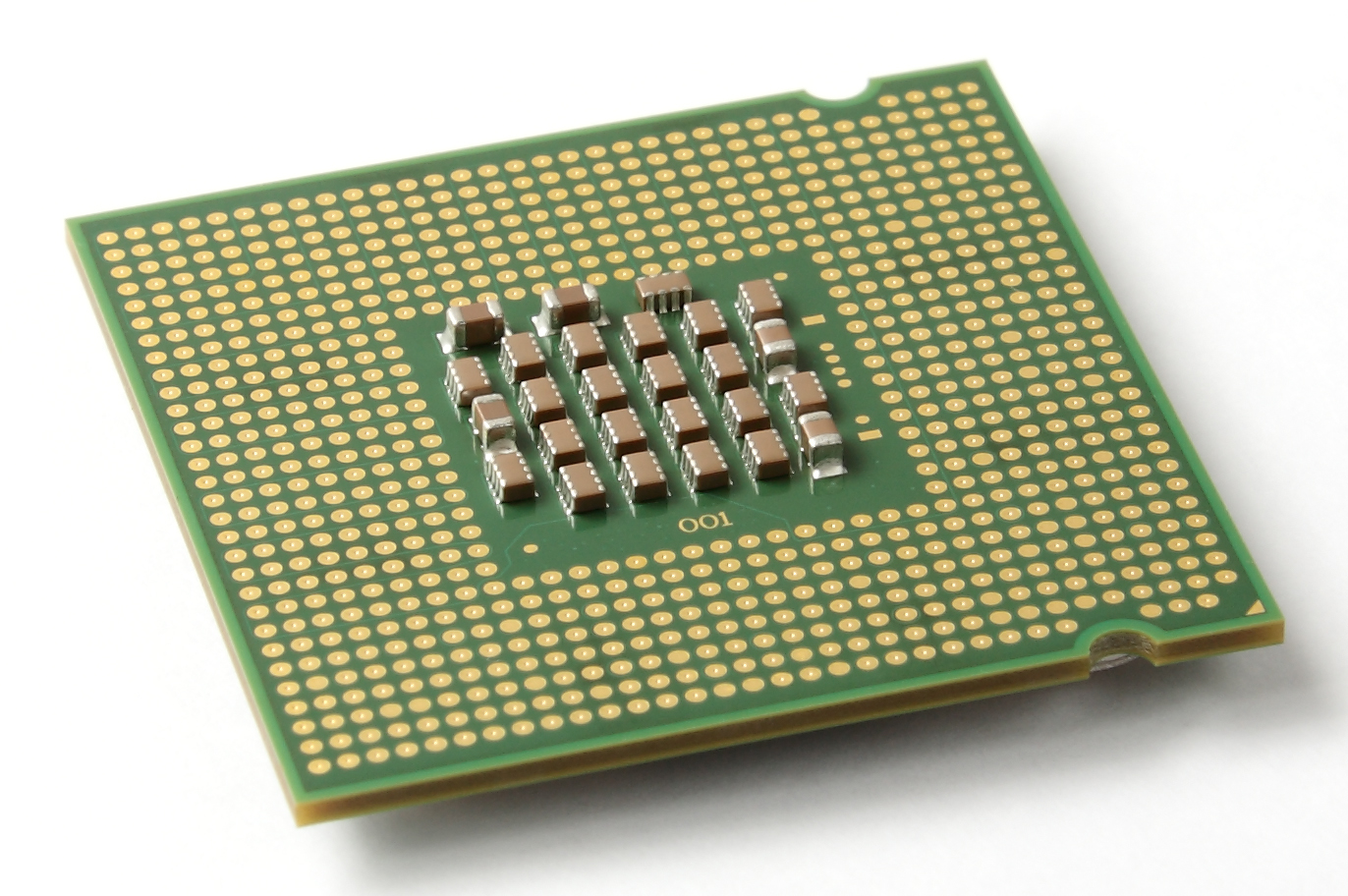-
CPU (Central Processing Unit):-
A central processing unit (CPU) is the electronic circuitry within a computer that carries out the instructions of a computer program by performing the basic arithmetic, logical, control and input/output (I/O) operations specified by the instructions. The computer industry has used the term “Central Processing Unit” at least since the early 1960’s. Traditionally, the term “CPU” refers to a processor, more specifically to its processing unit and control unit (CU), distinguishing these core elements of a computer from external components such as main memory and I/O circuitry.
CPU is known as the brain of computer. The CPU controls the operation of all other components such as memory, Input and Output devices. Under its control, programs and data are stored in the memory and outputs are displayed on the monitor or printed in paper.
CPU (pronounced as separate letters) is the abbreviation for central processing unit. Sometimes referred to simply as the central processor, but more commonly called processor, the CPU is the brains of the computer where most calculations take place. In terms of computing power, the CPU is the most important element of a computer system.
Components of a CPU
The two typical components of a CPU include the following:
- The arithmetic logic unit (ALU), which performs arithmetic and logical operations.
- The control unit (CU), which extracts instructions from memory and decodes and executes them, calling on the ALU when necessary.
-
Mother Board:-
A motherboard is the main printed circuit board (PCB) found in general purpose microcomputers and other expandable systems. It holds and allows communication between many of the crucial electronic components of a system, such as the central processing unit (CPU) and memory, and provides connectors for other peripherals. Unlike a back plane, a motherboard usually contains significant sub-systems such as the central processor, the chip set’s input/output and memory controllers, interface connectors, and other components integrated for general purpose use.
Motherboard specifically refers to a PCB with expansion capability and as the name suggests, this board is often referred to as the “mother” of all components attached to it, which often include peripherals, interface cards, and daughter cards: sound cards, video cards, network cards, hard drives, or other forms of persistent storage; TV tuner cards, cards providing extra USB or Fire Wire slots and a variety of other custom components.
All the electronic components in a system are mounted on a piece of fiberglass called Motherboard. Motherboard also called System Board or PCB (Printed Circuit Board). Fiberglass is used because it is a nonconductor of electricity. Thin mental lines on the fiberglass connect pins from one component to another, forming the computer’s electrical circuits.
-
Hard Disk:-
Hard Disk is a device which stores all programs and data in the computer. Hence hard disk is called Storage House or referred to as the memory bank of a computer. The data stored on a hard disk can be retrieved at a very fast speed.
A hard disk drive is a non-volatile memory hardware device that permanently stores and retrieves data on a computer. A hard drive consists of one or more platters to which data is written using a magnetic head, all inside of an air-sealed casing. Internal hard disks reside in a drive bay, connect to the motherboard using an ATA, SCSI, or SATA cable, and are powered by a connection to the PSU (power supply unit).
- ALU (Arithmetic Logic Unit):-
The ALU is a complex digital circuit; one of many components within a computer’s central processing unit. It performs both bitwise and mathematical operations on binary numbers and is the last component to perform calculations in the processor. The ALU uses to operands and code that tells it which operations to perform for input data. After the information has been processed by the ALU, it is sent to the computer’s memory.
Multiple Arithmetic Logic Units can be found in CPUs, GPUs and FPUs. In some computer processors, the ALU is divided into an AU and LU. The AU performs the arithmetic operations, and the LU performs the logical operations.
An ALU is an integrated circuit within a CPU or GPU that performs arithmetic and logic operations. Arithmetic instructions include addition, subtraction, and shifting operations, while logic instructions include Boolean comparisons, such as AND, OR, XOR, and NOT operations.
ALUs are designed to perform integer calculations. Therefore, besides adding and subtracting numbers, ALUs often handle the multiplication of two integers, since the result is also an integer. However, ALUs typically do not perform division operations, since the result may be a fraction, or a “floating point” number. Instead, division operations are usually handled by the floating-point unit (FPU), which also performs other non-integer calculations.
- CU (Control Unit):-
The CU is responsible for controlling the entire function of ALU. It receives instructions from the memory and executes them after decoding. The timing and control signals are generated by this unit and sent to other units for execution of the program. It also transfers data between memory and input/ output devices.